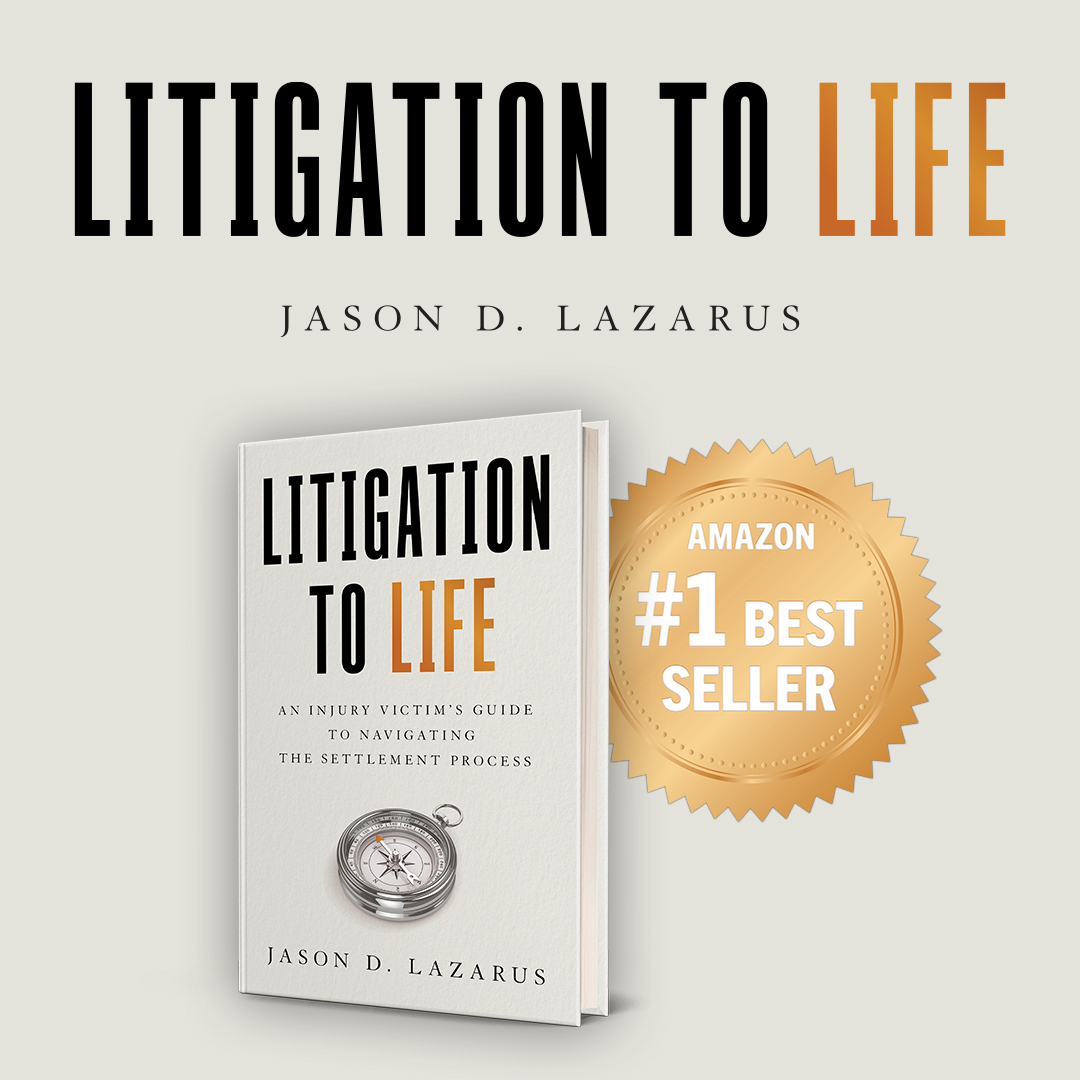Litigation to Life

I had just set out to greet the dawn with my cycling group when a truck struck me in an Orlando bike lane. I awoke in Orlando’s level one trauma center—jaw wired shut, on a ventilator, every bone in my face broken.
A grueling recovery and litigation process followed—but as an expert attorney in the field of settlement planning, I had an idea of what came next. However, through my own experience as a personal injury victim, I gained a newfound understanding of my work and my clients.
For the last twenty plus years, I have had the opportunity and privilege to work with people experiencing one of the most difficult and possibly worst periods in their lives. These clients have entrusted me to counsel them regarding important issues they face when resolving their personal injury case. As an injury victim myself, I know how hard it can be to deal with all of the issues you may experience when settling your case. That is why I wrote Litigation to Life, to help personal injury victims better understand important decisions that have to be made at settlement.
As a guide to what to expect, Litigation to Life will help you be prepared for what lies ahead when your personal injury case is resolved. This book will help you understand:
- The basics of what happens after an accident
- The process of settlement
- Laws that might impact your settlement
- Understanding financial considerations related to settlement planning
- Protecting future eligibility for Medicaid/SSI benefits
- How to ensure future Medicare coverage for injury related care
- What to do if you have both Medicaid and Medicare coverage
- Resolution of healthcare liens asserted against settlements
Book Reviews
This is the best book I've read for introducing catastrophically injured clients to potential settlement issues to consider in litigation. I also recommend The Art of Settlement by this same author for the lawyers advising these clients about settlement issues.
James Wren

Overview
In “Litigation for Life," Jason D. Lazarus brings a unique perspective to the field of personal injury special needs settlement planning—being both a seasoned attorney and a personal injury victim himself. This indispensable volume serves as a comprehensive guide for disabled injury victims navigating the complex terrain of healthcare, government benefit preservation, financial planning, and liens post-settlement. However, its utility extends beyond the victims; it is an essential read for trial lawyers.
Structure and Content
The book is strategically divided into eight core chapters, each addressing critical aspects of the settlement process that victims must understand. Lazarus starts with a direct address to injury victims in “You Have Been Injured, What’s Next?" before moving on to cover the ins and outs of planning for settlements, financial considerations, government health care options, and lien resolution.
The book also boasts several appendices that cover complex subjects like special needs trusts and Medicare set-asides, FAQs on various aspects of settlements, and frequently used acronyms—making it a practical reference tool.
Unique Insights and Expertise
What sets Lazarus’s work apart is the credibility he carries, having gone through a significant personal injury himself. This lends an empathetic tone to an otherwise technical subject matter, making the complex legal and healthcare systems navigable and relatable. The author's firsthand experience, coupled with his professional expertise, adds layers of authenticity and understanding that are rare to find.
Relevance to the Legal Profession
For trial lawyers dealing with personal injury victims at settlement, the book is a goldmine of insights. It not only elucidates the labyrinthine healthcare and financial planning systems but also outlines the nuances of safeguarding Medicaid and Medicare benefits—topics often mystified and fraught with challenges. Chapter 7, “A Settlement Planning Case Example – Protecting the Recovery by Putting it All Together," serves as a practical case study that attorneys can refer to as a template for discussing these complicated issues with their clients. Moreover, the comprehensive guidance for injury victims on lien resolution in Chapter 8 is a very helpful explanation for guiding injury victims.
Conclusion
“Litigation for Life" is not merely an academic treatise; it is a manual for surviving and thriving post-litigation. Lazarus masterfully transforms his personal and professional journeys into a readable, engaging narrative laced with invaluable takeaways.
For attorneys who are committed to ensuring their catastrophically injured clients reclaim their lives post-settlement, this book is not an option—it is a necessity. Highly recommended.
Nathan P. Carter
Your Insurance Attorney
Jason D. Lazarus © 2020. All rights reserved


